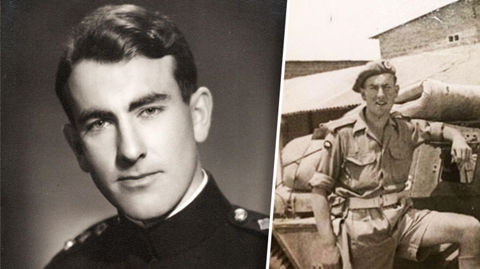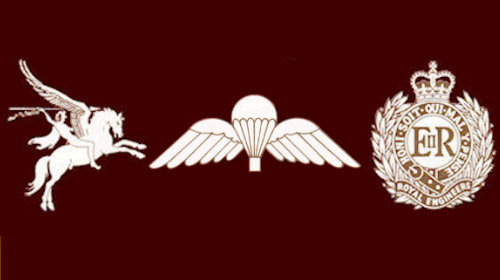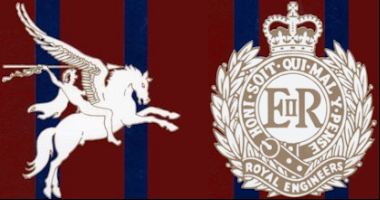
Roll of Honour

Major Colin Gillespie MBE
 |
Major Colin Gillespie MBE (Mil), sapper, SAS commander and winegrower, was born on May 10, 1925. He died on June 19, 2023, aged 98 |
One day in 1957, the commanding officer of the 22nd Special Air Service Regiment (22 SAS), Lieutenant Colonel Tony Deane-Drummond, flew from his jungle base in up-country Malaya to Far East Land Forces headquarters in Singapore to be briefed on the current state of the “Emergency”.
In the operations room was 34-year-old Captain Colin Gillespie, a tall, slim sapper officer, veteran of the Italian campaign and recent graduate of the Indian army staff college. “DD”, of Arnhem fame, was impressed by Gillespie’s appreciation of jungle operations gained in India, and also that he was parachute trained.
With the impending defeat of the communist insurgency in Malaya [now Malaysia], the future of the regular SAS, re-raised as the “Malayan Scouts” in 1950 after disbandment following the Second World War, looked in doubt, and it was not helping recruiting. Needing a new commander for B Squadron, “DD” decided to short-cut the recently devised selection process in Wales and invited Gillespie to “come and join us and see how we get on”. It was, after all, the way the first squadron of Malayan Scouts had been raised.
Joining at their base in Selangor state, Gillespie was first mentored in SAS fieldcraft by two troop commanders, both of them future commanding officers and generals: Tony Jeapes and Peter de la Billière. They advised him to carry a repeating 12-bore shotgun rather than a rifle.
A spell with A Squadron towards the end of their three-month operation in deep jungle followed, and then command of a ten-man troop in B Squadron near the Thai border to ambush “CTs” [communist terrorists] entering the country from Thailand. Gillespie later recalled how “I looked at my tiny command of ten troopers, two Iban [of Borneo] trackers and a [native of Malaya], at my age of 34 and thought back to my first command in Italy of 70 sappers and a huge amount of equipment. It might not appear to have been progress.” But they were doing “an arduous task in rotten living conditions [which] seemed worthwhile. Morale was high and we felt we could do any task they threw at us.”
When the squadron came out of the jungle, however, they found that the other two squadrons along with “DD” himself had flown in great secrecy to Oman to help put down the insurgency there. Gillespie, finding himself the senior remaining officer, had to organise the move back to England.
The troopship berthed at Southampton six weeks later, “to be met by an officer from SAS headquarters in London to tell us what the future had for us. He announced that the regiment would be stationed in an old wartime barracks near Malvern. With remarkable inefficiency he had no map of the area but he produced the next best thing, the adjacent Ordnance Survey map of Oxford with a black arrow pointing to Worcestershire and the Malvern Hills.”
When they reassembled after leave, B Squadron were told to train for mountain and arctic warfare. It suited Gillespie, who in 1946 had done a mountain warfare course in Austria with former Wehrmacht Alpine troops. A year later, however, B Squadron were suddenly axed: 22 SAS were to be reduced in strength — with mountain and snow warfare in future the job of the Royal Marines. The troopers were redistributed to A and D squadrons, but there was no longer a place for Gillespie, who was offered instead a post at HQ East Africa Command, in Kenya.
Colin Leonard Beauchamp Gillespie was born at Chatham, Kent, in 1925, the only son of an officer in the Royal Marines who served in the battleship Royal Oak at the Battle of Jutland in 1916. He was educated at preparatory school in Plymouth and then Wellington College, whence in 1943 he was accepted for the Royal Engineers (RE). After basic training in Lanarkshire, and still only 17, he was sent to Cambridge for the short wartime engineering course. Commissioned in summer 1944, but then much to his frustration having to undertake further specialist training, he at last saw action in the closing stages of the Italian campaign — an honourable whiff of cordite crossing the River Po — with a squadron of some 250 seasoned soldiers who had fought across Algeria, Tunisia, Sicily and the length of Italy.
After the German surrender they passed a pleasant summer in an Austrian valley untouched by war, but which, as Gillespie recalled in his memoirs, “had been used by the Germans for breeding their super-race. There were chalets scattered around as if it were a holiday camp. Girls with the correct pedigree were called up and met blond Aryan men to bed and breed a new nation. The huts were sadly empty but their reputation remained.” Gillespie was billeted in a village with “a good-looking landlady who was prepared to sacrifice herself to save her daughter”. The army’s non-fraternisation policy was strictly observed. She became cross when he refused the offer.
On return to England via a spell in Palestine during the turbulent expiry of the mandate, Gillespie was granted a regular commission. The RE posting department suggested he return to Cambridge for an engineering degree. However, he doubted if after three years away he would be able to cope with the academic work, so he was offered a job for six months allowing him to brush up his maths and physics: technical adviser to a film unit producing an instructional film about engineering. They operated out of Pimlico, in central London, which would give him access to “seats of learning”.
In the end, the job took a year and a half, and such were the distractions of postwar London that he did no part-time study. He did, however, meet Susan (“Sue”) Cursham again, a tennis-playing friend from Cornwall days who was a student-caterer at the London Hospital. They married in 1952 when he returned from Hong Kong, where he had been sent after Pimlico. Sue died in 2008. Their two children survive him: Janet, a former House of Commons secretary, and Simon, a prominent art conservator.
A spell in the war office followed. Married quarters were few. The Gillespies lived on a barge at Chiswick. Subsequently he was posted as an instructor to Sandhurst, giving him the opportunity to study for the staff college entrance exam. Passing with high marks, he was selected for the Indian army staff college, in the Nilgiri Hills in southern India, following which came the posting to Singapore and introduction to the SAS.
The Kenya posting after disbandment of B Squadron was bloodless, the Mau Mau insurgency having fizzled out. The high point, literally, was above the snow line, at 19,000ft, where in December 1961 he and a party of signallers from the King’s African Rifles fulfilled the wish of the soon-to-be President Nyerere of neighbouring Tanganyika [now Tanzania] on independence “to light a candle and put it on the top of Mount Kilimanjaro which would shine beyond our borders giving hope where there was despair, love where there was hatred and dignity where before there was only humiliation”. Cordite and flares substituted for the candle.
Next came an appointment with greater promotion prospects: command of 9 (Independent) Parachute Squadron RE. In 1964 the squadron hastily deployed to Cyprus with 16 Parachute Brigade, which was commanded by a future chief of the general staff, Roland Gibbs, during an eruption of intercommunal [Greek-Turkish Cypriot] violence. For his part in the peacekeeping operation, Gillespie was appointed MBE (Military).
Promotion to lieutenant colonel might then have been expected, but Gillespie had not served in Germany, where the “action” was, or in a “smart” staff job. Another stint in the war office followed, and then, at 42, close to the upper age limit for promotion, yet another major’s job: second-in-command of the 3rd Division’s RE regiment on Salisbury Plain.
It was, however, an appointment in which to shine. His responsibilities included training, and he was determined to be adventurous. The adjutant was John Blashford-Snell, of exploration fame. “Blashers” introduced him to a friend who owned a disused quarry in Guernsey separated from the sea by a granite cliff. It would make a perfect marina if they could cut through the cliff. Gillespie judged it to be good training: an estimated three weeks’ drilling and blasting for a section of nine sappers, at a cost of £535 for the quarry-owning entrepreneur.
In an episode worthy of Evelyn Waugh’s Sword of Honour trilogy, the following month, to the delight of holidaymakers, his sappers arrived by landing craft on an adjacent beach. Next day they discovered how hard granite was in Guernsey. They were still there nine months later. A Labour MP asked a parliamentary question: why were soldiers working on Guernsey “to construct a haven for rich men’s yachts?” The war office ordered an inquiry. The command secretary assessed the cost to the taxpayer at £27,000. The inquiry recommended that Gillespie be not placed in a position of greater responsibility, a gain to the Exchequer perhaps, but a loss to imaginative training. His career had effectively ended with a bang; or rather, with too many bangs.
His final posting was on the staff of the Joint Warfare Establishment at Old Sarum, one of whose functions was developing “black ops”.
On leaving the army in 1971, Gillespie considered several possibilities, including using his explosives skills to financial benefit, but decided instead on viticulture. Establishing himself on a farm in Somerset, he twice won the Gore-Browne Trophy for best wine of the year, and for five years was chairman of the English Vineyards Association. In 1999 he sold his business and retired to Wells, writing phlegmatically in his memoirs, “my life had been ordered by events with little influence by me”.












